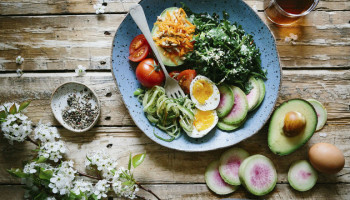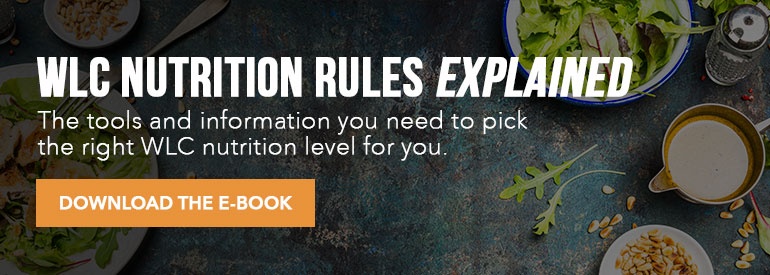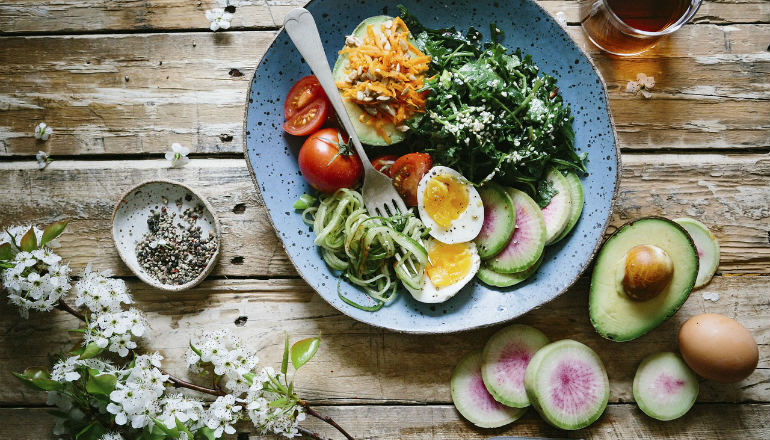 Reading Time: 7 minutes
Reading Time: 7 minutesI’ve been in health and fitness for over seventeen years. For most people, success in exercise comes easier then nutrition success. Nutrition concepts can seem simple enough: just eat lots of vegetables, adequate protein, healthy fats, and the list can go on. Execution, however, is another story.
Getting to the gym or exercising at home is something you either do, or don’t do. Sure, there are many levels of what constitutes a good workout from a less productive one. But nutrition tends to have more grey area then exercise. Is peanut butter good? Are eggs bad this month? Looking at it another way, we tend to give moral values to food. Exercise is either “done” or “not done,” whereas we hear things like, “This food is bad,” “This meal will make you live to 100,” and so on.
This extra analysis of food can lead to us doing nothing. It’s almost too daunting, so why try? When something has too many moving parts, it can make working on it impossible because we can’t possibly control for every variable.
My first car was a 1993 Plymouth Sundance — worst thing I’ve ever owned. When it would start spewing fluid and smoke, I’d open the hood and look at it. I had an illusion that I’d magically pull out a wrench and give a bolt a few turns to fix it. Of course, I ended up at the mechanic every time. Mechanics get paid for a reason. After a while, I just kept it simple: I gave it oil, gas, and good tires. I let the mechanic do the work.
It’s the same with food. Focus on the variables that you can control and that give you the most return. If you have a more serious problem or aren’t getting anywhere, a coach or doctor would be the way to go.
With that, I give you the two essential tools that provide my clients with the most nutrition success:
- Take pictures of your food and send it someone for accountability.
- Most meals should be homemade.
Let’s dive into each one so you can maximize your own healthy eating efforts.
Tool #1: Take Pictures of Your Food
Food journals can work, and I used to use them a lot more than I do now. Simply writing down your food is powerful in terms of being objective about what you are consuming. However, pictures take things to a new level.
Take a picture of everything you eat. I have clients send their photos to me real-time. My wife always laughs because my text messages are all pictures of food. Ideally, you can find a friend or someone in an online group who also wants to have an accountability system and be “food photo buddies” with him or her.
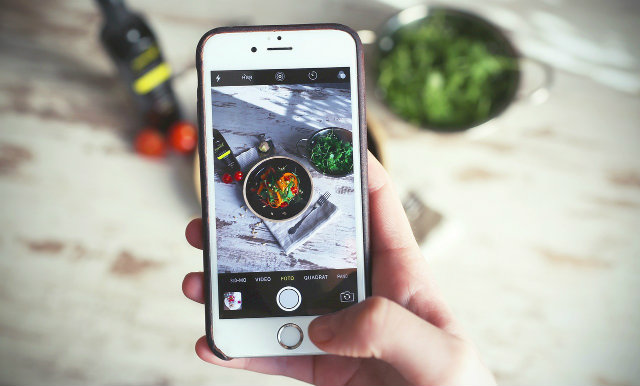
I can say with confidence that the more consistent you are with pictures, the better the results. I sometimes see half-eaten pastries in the corner of a client’s picture, with the hope I wouldn’t notice. We both have a laugh, because it is human nature to find ways around rules. But perfection isn’t the goal, and just being consistent with pictures will help prevent falling off the path.
There is another reason for taking pictures of everything. Years ago, as the story goes, the rock group Van Halen requested that when they arrived at the concert venue, there would be no brown M&Ms in the candy bowl. Many people thought this request was just to be a pain. However, the real reason was that if the venue couldn’t do a simple task like pick out M&Ms, how could they possibly properly set up high-tech sound equipment?
It’s the same concept with diet. If you can’t take three or four pictures a day and send it to someone, are you really ready to dive into more involved and detailed nutrition action?
It doesn’t mean you are a bad person if you can’t keep up with the photos, it’s just a good indicator to stay put and get the basics down before moving on. I have high-level golfers at my facility who practice their sport diligently all day long. But when we work on a nutrition change, many of them struggle at first with consistent pictures. These are men and women who can hit a little white ball for hours with precision, who spend entire afternoons putting and analyzing angles and stances. For them to struggle with simple pictures speaks to how simple yet difficult it is to put this habit into practice.
But keep at it anyway, don’t worry about perfection, have a strong accountability commitment to someone else, and the results will come.
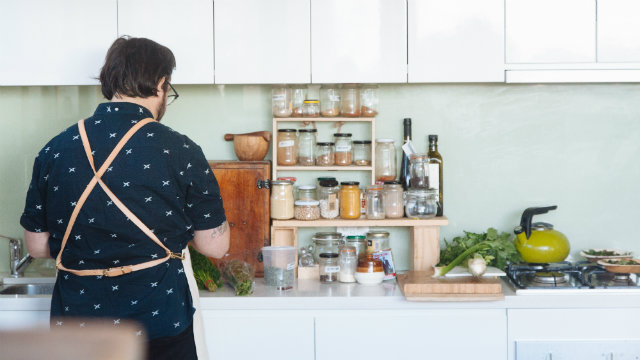
Tool #2: Eat Homemade Food
Without a doubt, people who make their own food do better with their nutrition changes. It’s a theme I see over and over again.
I know making your own food is easier said than done. But the great thing about it is that you don’t have to be a chef and the meals you make don’t have to fit perfectly into a nutrition textbook. With very few exceptions, homemade beats eating out for both weight loss and general health. The only exceptions would be having a personal chef or signing up for meal delivery, like a service that prepares regular meals with transparent nutrition information.
We all have our priorities, and big plans to go to the gym and cook fancy food take time away from other things in life. The more condensed you can make the cooking process, the better. With that in mind, transitioning to eating homemade food requires two things:
- Time management
- Some basic cooking skills
Instead of separating these two things out, let’s discuss them together because owning certain kitchen equipment can actually check both boxes.
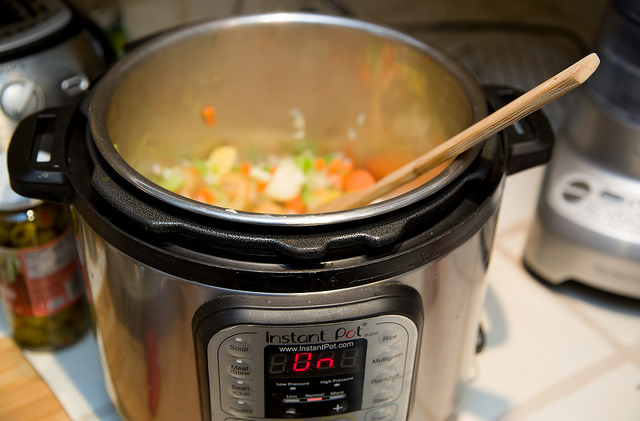
Some Advice on Kitchen Equipment
I was skeptical of the various Instant Pots, until I got one. These devices do pressure, steam, saute, and slow cooking in one pot. They also act as a rice cooker, make easy eggs, and perform several other features. They cook food quickly and create fewer pots and pans to wash (nice, right?).
Even if you don’t own an Instant Pot, you are still going to be fine. Having a pressure cooker, a slow cooker, and one or two pans will do the trick. However you plan to cook your favorite dishes, just be sure you consider and eliminate the potential roadblocks.
By “roadblocks,” I mean our amazing ability to talk ourselves out of things. Common issues are:
- That the necessary kitchen equipment is dirty
- That you don’t have time to constantly check on the cooking process
- Or that you don’t know how to use the necessary equipment
Remove all roadblocks. In my opinion, the simpler and easier your kitchen equipment is to clean the better off you’ll be. If you don’t have much time, use a slow cooker the majority of the week. Buy three of them, so dishes don’t get in your way. Not sure how to use a pressure cooker? Spend about twenty minutes on a weekend and look online for videos. You just need enough skills to get started. (Don’t be like my clients who’ve bought kitchen items and then left in the box for months.)
Now: Plan Ahead for Homemade Food Success
Now that you’ve purchased and/or organized your equipment, plan your week ahead. By being efficient with your time, you’ll be amazed how much you can get done. With a list, you’ll save time at the grocery store, and probably save money by avoiding purchases you don’t need. You will also save time cooking, because you can plan your food preparation through choosing the dishes you make.
Pro-Tip: on average, aim for recipes that take under 10 minutes of food preparation.
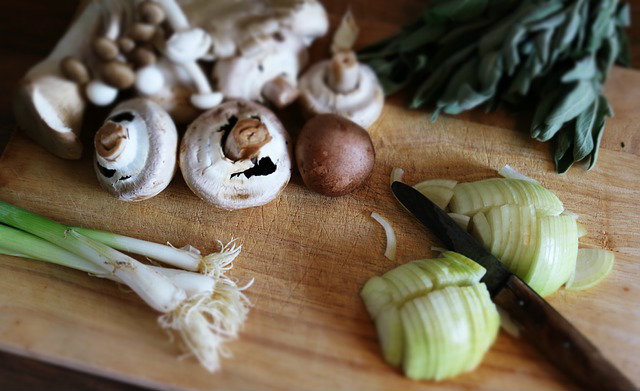
Start Today for Nutrition Success
My last bit of advice would be to start today. Tomorrow is just a roadblock to today. Forget perfection, just send your accountability buddy pictures of whatever you are eating. I guarantee you’ll eat less of that pastry, or at least spark an awareness of your day-to-day habits.
Get cooking and make mistakes (just try not to burn down the house). You may thin out your kitchen or buy things you realize may not be needed. That’s okay. Go with the flow and keep getting better at your craft by owning your accountability and food preparation skills.
Instant Pot photo (CC BY 2.0) by Robert Couse-Baker.
